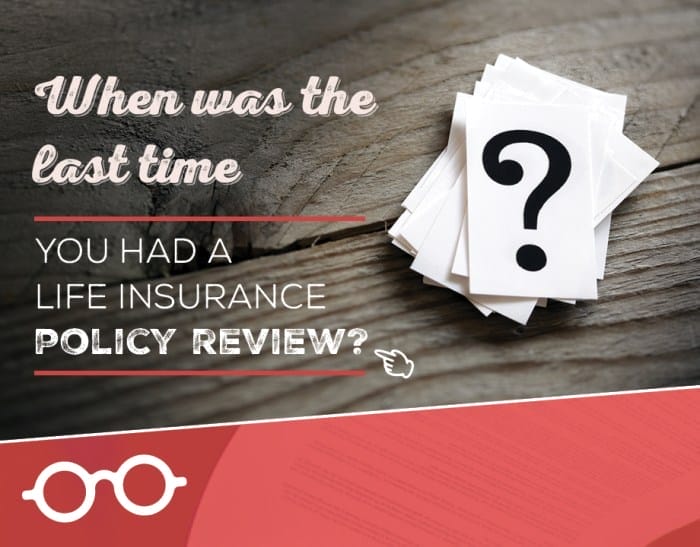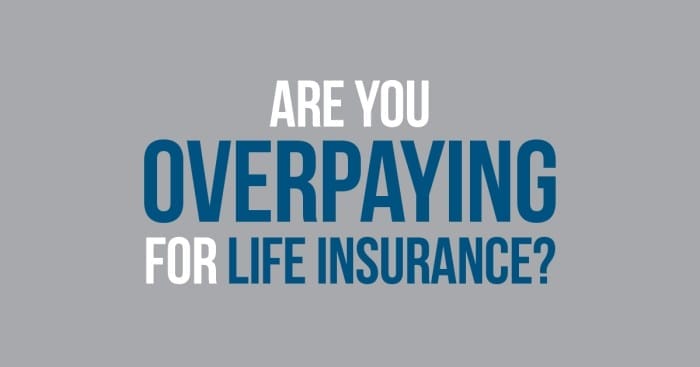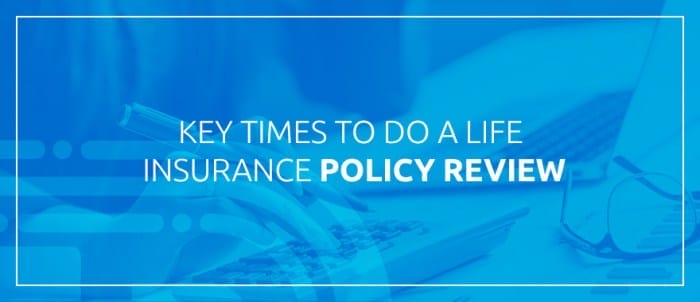In the realm of personal finance, life insurance stands as a cornerstone of financial security, providing peace of mind and protection for loved ones in the face of life’s uncertainties. However, as circumstances evolve and life progresses, it’s crucial to periodically evaluate existing life insurance policies to ensure they remain aligned with changing needs and financial goals.
This comprehensive guide delves into the significance of policy reviews, highlighting potential risks and consequences of neglecting them. It explores key factors to consider during evaluations, identifying policy changes, understanding terms and conditions, comparing coverage options, assessing financial stability, considering riders and endorsements, reviewing beneficiary designations, evaluating policy performance, and consulting with insurance professionals.
Evaluating Existing Life Insurance Policies
In the labyrinth of financial planning, life insurance policies serve as pillars of security, safeguarding loved ones against life’s unpredictable turns. However, as circumstances evolve, so should your life insurance coverage. A comprehensive evaluation of existing policies ensures they remain aligned with your changing needs and financial objectives.
Neglecting regular policy reviews can lead to potential risks and consequences that may jeopardize your family’s financial well-being. Outdated policies may provide inadequate coverage, leaving your loved ones vulnerable in times of need. Premiums may also escalate over time, straining your budget and potentially leading to policy lapse.
A thorough evaluation empowers you to make informed decisions, adjust coverage amounts, and optimize premium payments, ensuring your policy remains a steadfast protector.
Key Factors to Consider
Conducting a thorough evaluation of your life insurance policies requires careful consideration of several key factors:
- Current Life Stage and Responsibilities: Life insurance needs fluctuate with life stages. Marriage, childbirth, career changes, and retirement all impact coverage requirements. Regularly reviewing your policy ensures it aligns with your evolving responsibilities and financial commitments.
- Income and Expenses: Evaluating your income and expenses is crucial. Assess whether your current coverage adequately replaces your income and covers outstanding debts, mortgage payments, and other financial obligations. Adjust coverage amounts as necessary to maintain financial stability for your loved ones.
- Health Status: Changes in health status can significantly impact life insurance premiums. If your health has improved, you may qualify for lower premiums. Conversely, if your health has declined, you may need to increase coverage to ensure adequate protection.
- Beneficiaries: Review your beneficiaries periodically to ensure they accurately reflect your current wishes. Changes in marital status, family dynamics, or financial circumstances may warrant adjustments to your beneficiary designations.
- Policy Riders and Endorsements: Life insurance policies often offer riders and endorsements that provide additional coverage or flexibility. Evaluate whether these add-ons align with your current needs and budget. Consider adding or removing riders as necessary to optimize your policy.
- Premium Payments: Assess your premium payments to ensure they are affordable and sustainable in the long run. Explore options for premium payment frequency and consider increasing coverage amounts if premiums allow.
- Policy Performance: Review the performance of your life insurance policy. Compare premiums, coverage amounts, and policy features with similar policies from different insurers. This comparison can help you determine if you’re getting the best value for your money.
Identifying Policy Changes and Adjustments

Regularly evaluating your life insurance policy is crucial to ensure it aligns with your evolving personal circumstances and financial goals. Certain life events can significantly impact your insurance needs, necessitating policy adjustments to maintain adequate coverage.
Marriage and Childbirth
Marriage and childbirth are significant life events that may prompt adjustments to your life insurance policy. When you get married, you may want to increase your coverage to protect your spouse and ensure they have financial support in the event of your untimely demise.
Similarly, having children may necessitate an increase in coverage to provide for their future education and well-being.
Career Changes
Career changes can also affect your life insurance needs. If you transition to a higher-paying job, you may want to consider increasing your coverage to maintain a similar level of financial protection for your loved ones. Conversely, if you experience a career setback or retirement, you may need to adjust your policy to reflect your reduced income.
Health Changes
Changes in your health status can also impact your life insurance policy. If you develop a serious illness or experience a significant health event, you may want to consider purchasing additional coverage to ensure your loved ones are financially secure in the event of your passing.
Understanding Policy Terms and Conditions

Evaluating existing life insurance policies involves a thorough understanding of the terms and conditions Artikeld in the policy document. This section explores the importance of carefully reviewing these terms, provides tips for deciphering complex insurance jargon, and highlights the significance of comprehending key policy provisions.
Reviewing Policy Terms and Conditions
It is crucial to carefully review the policy terms and conditions to ensure a clear understanding of the coverage provided, the rights and obligations of the policyholder, and the terms of the contract. This review should focus on the following key aspects:
- Coverage Details: Verify the policy’s coverage amount, the types of life insurance provided (e.g., term life, whole life, universal life), and any additional riders or benefits included.
- Premium Payments: Understand the premium payment schedule, the due dates, and any grace periods allowed for late payments.
- Policy Duration: Determine the policy’s duration, whether it is a term life policy with a specific expiration date or a permanent life policy that provides coverage for the policyholder’s entire life.
- Beneficiaries: Review the designated beneficiaries and ensure they are up-to-date and reflect the policyholder’s current wishes.
Deciphering Insurance Jargon
Insurance policies often contain complex jargon and clauses that can be challenging to understand. To navigate this complexity, consider the following tips:
- Use Online Resources: Utilize online resources such as insurance glossaries, dictionaries, and consumer guides to clarify unfamiliar terms and concepts.
- Consult a Financial Advisor: Seek guidance from a qualified financial advisor or insurance agent who can explain the policy’s provisions in a clear and concise manner.
- Contact the Insurance Company: Reach out to the insurance company’s customer service department or agent for assistance in understanding specific terms or clauses.
Understanding Key Policy Provisions
Beyond the general terms and conditions, it is essential to understand specific policy provisions that impact the coverage and benefits provided. These provisions may include:
- Death Benefits: Review the policy’s death benefit payout structure, including the amount of coverage, any guaranteed death benefits, and any additional riders that enhance the coverage.
- Riders: Explore any riders or optional benefits attached to the policy, such as accidental death and dismemberment (AD&D) coverage, waiver of premium riders, or chronic illness riders.
- Exclusions: Be aware of any exclusions or limitations in the policy that may restrict coverage in certain situations, such as death resulting from hazardous activities or suicide.
Comparing Coverage Options and Premiums

When reviewing existing life insurance policies, comparing coverage options and premiums from different insurance providers is crucial. It enables policyholders to make informed decisions about their coverage needs and financial obligations.
Tips for Comparing Coverage Options and Premiums
- Research and Comparison: Conduct thorough research to gather information about various life insurance providers and their offerings. Compare coverage options, premium rates, policy terms, and riders to find the most suitable policy for your needs.
- Assess Coverage Needs: Evaluate your current and future coverage requirements. Consider factors such as age, income, dependents, debts, and financial goals to determine the appropriate level of coverage.
- Review Policy Terms: Carefully examine the policy terms and conditions, including the death benefit, premium payment options, grace periods, and surrender charges. Ensure you understand the implications of these terms before making a decision.
- Consider Riders and Endorsements: Explore the availability of riders and endorsements that can enhance your coverage. These additional features may provide benefits such as accidental death, disability income, or long-term care coverage.
- Consult an Insurance Professional: If you have questions or need assistance understanding the complexities of life insurance policies, consult an experienced insurance agent or financial advisor. They can provide personalized guidance and help you make informed choices.
Policy Portability: Implications for Policyholders
Policy portability refers to the ability to transfer an existing life insurance policy from one insurance provider to another without losing the accumulated benefits and features. This flexibility allows policyholders to switch providers if they find a more favorable policy or if their circumstances change.
- Benefits of Policy Portability: Policy portability provides several advantages, including the ability to secure better coverage terms, lower premiums, or access to additional features. It also eliminates the need to undergo a new medical exam, which can be particularly beneficial for individuals with health conditions.
- Limitations of Policy Portability: While policy portability offers numerous benefits, it may have certain limitations. Some insurance providers may restrict portability to specific policies or may impose fees for the transfer. Additionally, the new provider may require an updated medical exam or may not offer the same riders or endorsements as the previous policy.
Evaluating the Cost-Benefit Ratio of Different Policies
When comparing different life insurance policies, it is essential to evaluate the cost-benefit ratio to determine the most advantageous option. This involves assessing the premium cost in relation to the coverage provided and the policy’s terms and conditions.
- Calculating the Cost-Benefit Ratio: To calculate the cost-benefit ratio, divide the annual premium by the death benefit. A lower ratio indicates that you are paying less for the coverage provided. However, it is important to consider other factors such as policy terms, riders, and the financial stability of the insurance provider.
- Considering Long-Term Costs: While focusing on the immediate premium cost is important, consider the long-term financial implications of the policy. Some policies may have higher initial premiums but offer lower rates in the future, while others may have lower initial premiums but increase over time. It is crucial to assess the sustainability of the premiums over the policy’s lifetime.
Assessing Financial Stability of Insurance Companies
Evaluating the financial stability of an insurance company is a crucial aspect of life insurance policy review. A financially sound insurer is more likely to fulfill its obligations to policyholders, ensuring timely payouts and claims processing.
To assess an insurance company’s financial stability, consider the following:
Researching Financial Strength Ratings
Insurance companies are assigned financial strength ratings by independent rating agencies such as AM Best, Moody’s, and Standard & Poor’s. These ratings provide an objective assessment of an insurer’s financial health, claims-paying ability, and overall stability.
- AAA (Excellent): Highest financial strength rating, indicating exceptional ability to meet policyholder obligations.
- AA (Very Good): Strong financial stability, indicating a high likelihood of fulfilling policyholder commitments.
- A (Good): Solid financial position, indicating a good ability to meet policyholder obligations.
- BBB (Fair): Adequate financial strength, indicating a reasonable ability to meet policyholder obligations.
- Below BBB (Weak): Indicates a higher risk of financial distress, potentially affecting policyholder payouts and claims processing.
Evaluating Financial Statements
Review the insurance company’s financial statements, including its annual report and quarterly reports, to assess its financial health. Look for indicators of financial stability, such as:
- Adequate Capitalization: The company should have sufficient capital reserves to cover potential losses and claims.
- Strong Liquidity: The company should have enough liquid assets to meet short-term obligations and claims.
- Positive Operating Cash Flow: The company should generate positive cash flow from its operations to sustain its business.
- Low Debt-to-Equity Ratio: A high debt-to-equity ratio indicates that the company may be taking on too much debt, which can increase its financial risk.
Understanding Policyholder Payouts and Claims Processing
The financial stability of an insurance company directly impacts policyholder payouts and claims processing. A financially sound insurer is more likely to:
- Pay Policyholder Claims Promptly: Policyholders can expect timely and efficient claims processing, ensuring they receive their benefits without delay.
- Maintain Competitive Premiums: A financially stable insurer can offer competitive premiums to policyholders, making life insurance more affordable.
- Provide Long-Term Security: Policyholders can have peace of mind knowing that their life insurance coverage will be there for them when they need it.
Considering Policy Riders and Endorsements

Policy riders and endorsements offer opportunities to customize and enhance your life insurance coverage, catering to specific needs and circumstances. Understanding their purpose and benefits can help you tailor your policy to provide optimal protection.
Types of Riders and Endorsements
Riders and endorsements come in various forms, each addressing different aspects of your coverage. Some common types include:
- Accidental Death Benefit Rider: Provides additional coverage in case of death due to an accident, often with a higher payout.
- Waiver of Premium Rider: Waives your premium payments if you become disabled, ensuring continued coverage without financial burden.
- Guaranteed Insurability Rider: Allows you to increase your coverage amount in the future without undergoing another medical exam, regardless of your health status.
- Child Rider: Extends coverage to your children, providing a safety net for their future.
- Return of Premium Rider: Refunds a portion or all of your premiums if you outlive the policy term, offering a potential financial benefit.
Evaluating the Need for Riders
When considering policy riders, assess your individual needs, lifestyle, and financial situation. Ask yourself:
- Do you engage in high-risk activities that could warrant an accidental death benefit rider?
- Is your occupation or lifestyle prone to disability, making a waiver of premium rider beneficial?
- Do you anticipate needing more coverage in the future due to growing responsibilities or family size, making a guaranteed insurability rider valuable?
- Do you have young children who would benefit from a child rider?
- Would a return of premium rider provide peace of mind and potential financial gain?
Reviewing Beneficiary Designations

It is crucial to review and update beneficiary designations regularly to ensure that your life insurance policy accurately reflects your current wishes and circumstances. Beneficiaries are the individuals or entities who will receive the death benefit from your life insurance policy.
Reviewing beneficiary designations is essential for several reasons:
Legal and Financial Implications
Legal Requirements
Beneficiary designations are legally binding, and failure to update them can result in the death benefit being distributed according to the default rules set by the insurance company or state law, which may not align with your intentions.
Tax Implications
Beneficiary designations can impact the taxation of the death benefit. Certain beneficiaries, such as spouses, may be eligible for tax-free benefits, while others may be subject to taxation.
Changing or Adding Beneficiaries
Methods for Changing Beneficiaries
Changing or adding beneficiaries to an existing life insurance policy typically involves submitting a change of beneficiary form to the insurance company. This form may require your signature, the signature of the current beneficiary (if applicable), and possibly a witness.
Irrevocable Beneficiaries
Some policies may have irrevocable beneficiary designations, meaning that you cannot change the beneficiary without their consent. It is important to understand the terms of your policy regarding beneficiary designations.
Considerations for Beneficiary Designations
Primary and Contingent Beneficiaries
You can designate a primary beneficiary who will receive the death benefit and a contingent beneficiary who will receive the benefit if the primary beneficiary predeceases you or is unable to receive the benefit.
Minors as Beneficiaries
If you designate a minor as a beneficiary, you should consider appointing a guardian or trustee to manage the death benefit until the minor reaches the age of majority.
Evaluating Policy Performance and Returns

Life insurance policies with a cash value component offer a unique blend of protection and financial growth potential. Understanding how to evaluate the performance and returns of these policies can help you make informed decisions about your financial future.
Assessing Cash Value Accumulation
Cash value accumulation is a key factor in evaluating the performance of a life insurance policy. It refers to the buildup of funds within the policy over time, which can be accessed through loans or withdrawals.
Regular Premium Payments
Consistent premium payments contribute to the growth of the cash value.
Investment Returns
The cash value is invested in various financial instruments, and the returns generated contribute to its accumulation.
Policy Fees and Charges
Fees and charges associated with the policy, such as administrative costs or mortality charges, can impact the cash value growth.
Understanding Policy Fees, Charges, and Surrender Costs
It’s important to be aware of the various fees and charges associated with life insurance policies.
Policy Fees
These fees cover administrative and operational costs, such as policy maintenance or premium collection.
Mortality Charges
These charges are used to cover the insurance company’s risk of paying out death benefits.
Surrender Charges
If you withdraw or surrender the policy before a certain period, you may incur surrender charges. These charges vary depending on the policy and the surrender period.
Consulting with Insurance Professionals

Consulting with qualified insurance professionals during policy evaluations can provide valuable insights and expertise to help individuals make informed decisions. These professionals possess specialized knowledge of insurance products, industry trends, and regulatory requirements, enabling them to offer personalized advice and guidance tailored to individual needs and circumstances.
Selecting Reputable Insurance Agents or Brokers
Finding a reputable insurance agent or broker is crucial to ensure unbiased and reliable advice. Consider the following tips:
- Seek Recommendations: Ask friends, family, or financial advisors for referrals to trustworthy insurance professionals.
- Check Credentials: Verify the agent’s or broker’s license and credentials through state insurance regulatory agencies.
- Consider Experience: Look for professionals with extensive experience in life insurance and policy evaluations.
- Assess Independence: Choose agents or brokers who are not tied to a particular insurance company, ensuring they can provide unbiased advice.
Role of Insurance Professionals in Policy Evaluations
Insurance professionals play a vital role in policy evaluations by:
- Conducting a Comprehensive Review: They thoroughly examine existing policies, identifying areas for improvement and potential gaps in coverage.
- Analyzing Financial Needs and Goals: They assess clients’ financial situations, goals, and risk tolerance to determine appropriate coverage levels.
- Providing Personalized Recommendations: Based on their analysis, they offer tailored recommendations for policy changes, adjustments, or new coverage options that align with clients’ needs.
- Explaining Policy Terms and Conditions: They clarify complex policy provisions, ensuring clients understand their rights, obligations, and benefits.
- Assisting with Policy Applications and Claims: They help clients navigate the application process and provide support in filing claims, ensuring a smooth and hassle-free experience.
Creating a Life Insurance Policy Evaluation Checklist
Developing a thorough checklist is essential for evaluating existing life insurance policies. This checklist should cover key aspects of the policy, including coverage, premiums, riders, beneficiaries, and the financial stability of the insurance company. By utilizing this checklist, individuals can conduct comprehensive and effective policy reviews to ensure their coverage aligns with their current needs and financial goals.
Checklist Items
- Policy Coverage:
- Review the death benefit amount to ensure it aligns with current financial obligations and future goals.
- Assess the policy’s coverage period to determine if it provides adequate protection throughout the desired timeframe.
- Consider the type of policy (term or permanent) and whether it meets long-term financial planning objectives.
- Premiums:
- Compare premiums with similar policies from different insurance companies to ensure you’re getting a competitive rate.
- Evaluate premium payment options (monthly, quarterly, annually) and choose the one that best suits your budget.
- Consider the impact of premium increases over time and assess if you can comfortably afford future payments.
- Riders and Endorsements:
- Review any riders or endorsements attached to the policy, such as accidental death benefit or waiver of premium.
- Assess the cost-effectiveness of these riders and determine if they provide valuable additional coverage.
- Consider adding riders if they align with your specific needs and provide meaningful protection.
- Beneficiaries:
- Verify the designated beneficiaries and ensure they are up-to-date with your current wishes.
- Review the beneficiary designation form to understand the distribution options and how they impact the policy payout.
- Consider naming contingent beneficiaries in case the primary beneficiary predeceases you.
- Financial Stability of the Insurance Company:
- Research the financial stability and reputation of the insurance company issuing the policy.
- Check the company’s A.M. Best rating or other independent financial strength ratings to assess its ability to meet its obligations.
- Consider the company’s track record of claims payments and customer service.
By systematically addressing each item on this checklist, individuals can gain a comprehensive understanding of their existing life insurance policy. This evaluation process empowers them to make informed decisions about maintaining, adjusting, or replacing their policy to ensure it continues to meet their evolving needs and provide peace of mind for their loved ones.
Last Word

Regularly evaluating life insurance policies is not just a prudent financial practice; it’s an act of care and responsibility towards oneself and loved ones. By staying vigilant and conducting thorough reviews, individuals can ensure their policies remain effective, providing the necessary financial protection throughout life’s journey.
Helpful Answers
Q: Why is it important to evaluate existing life insurance policies regularly?
A: Life insurance policies should be evaluated regularly to ensure they align with changing circumstances, such as marriage, childbirth, career changes, or retirement. Regular reviews help identify coverage gaps, outdated terms, and potential cost savings.
Q: What are some potential risks and consequences of neglecting policy reviews?
A: Neglecting policy reviews can lead to inadequate coverage, resulting in financial hardship for loved ones in the event of a claim. It may also result in missed opportunities for cost savings or policy enhancements that could better meet changing needs.
Q: What key factors should be considered when conducting a thorough evaluation?
A: Key factors to consider include changes in personal circumstances, policy coverage and benefits, terms and conditions, premiums and cost-benefit ratio, financial stability of the insurance company, policy riders and endorsements, beneficiary designations, policy performance and returns, and consulting with insurance professionals.
Q: How can I identify policy changes and adjustments that may be necessary?
A: To identify necessary policy changes, consider life events such as marriage, childbirth, career changes, or retirement. Assess if existing coverage is sufficient or if adjustments are needed to meet changing needs and financial goals.



